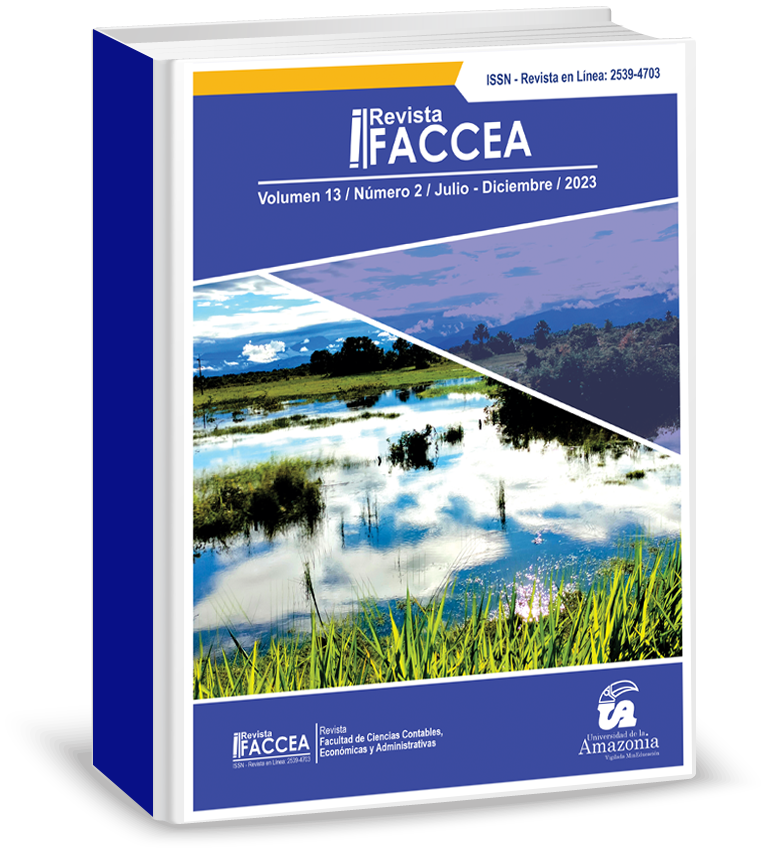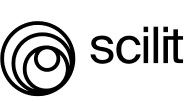PERCEPTION OF OCCLUDED FACES AND ITS SOCIAL EFFECTS FROM BEHAVIORAL ECONOMICS
DOI:
https://doi.org/10.47847/faccea.v13n2a3Keywords:
Perception, Mask, Economy, Behavior, MarketingAbstract
The article delves into a little-studied effect derived from the use of sanitary masks during the COVID-19 pandemic. An exploration of theoretical-conceptual contributions is carried out to identify the cognitive biases that influence perception in the presence of this occluder and its possible consequences in social and commercial relationships. In this sense, a literature review is carried out, identifying about 50 scientific documents that provided relevant information to understand the subject and serve as a basis for future research. It is concluded that there is a direct relationship between the use of sanitary masks and a greater perception of beauty with a consequent positive social assessment in different areas that contribute to better economic performance
Downloads
References
Adams, G. R. (1977). Physical attractiveness research. Human Development, 20(4), 217–239. https://doi.org/10.1159/000271558
Agthe, M., Spörrle, M., Frey, D., y Maner, J. K. (2014). Looking up versus looking down: attractiveness-based organizational biases are moderated by social comparison direction. Journal of Applied Social Psychology, 44(1), 40–45. https://doi.org/10.1111/jasp.12198
Arnheim, R. (1967). Arte y percepción visual. Psicología de la visión creadora (2a. Ed.). Buenos aires: EUDEBA.
Aydınoğlu, N. Z., y Cian, L. (2014). Show me the product, show me the model: Effect of picture type on attitudes toward advertising. Journal of Consumer Psychology, 24(4), 506–519. https://doi.org/10.1016/j.jcps.2014.04.002
Bar, M. (2003). A Cortical Mechanism for Triggering Top-Down Facilitation in Visual Object Recognition. Journal of Cognitive Neuroscience, 15(4), 600–609. https://doi.org/10.1162/089892903321662976
Barthes, R. (1986). Retórica de la imagen. In Lo obvio y lo obtuso (pp. 127–140). Buenos Aires: Paidós.
Berg, H. (2015). Faces of Marketing: Examining Consumer Responses to depictions of people in marketing. Stockholm School of Economics.
Bower, A. B., y Landreth, S. (2001). Is beauty best? Highly versus normally attractive models in advertising. Journal of Advertising, 30(1), 1–12. https://doi.org/10.1080/00913367.2001.10673627
Buunk, A. P., y Dijkstra, P. (2011). Does attractiveness sell? Women’s attitude toward a product as a function of model attractiveness, gender priming, and social comparison orientation. Psychology & Marketing, 28(9), 958–973. https://doi.org/10.1002/mar.20421
Castro Hernández, J. C. (2009). ¿Una filosofía del cuerpo en Kant?: una aproximación estético-antropológica. Praxis Filosófica, (28), 169–180.
Childers, T. L., y Houston, M. J. (1984). Conditions for a picture-superiority effect on consumer memory. Journal of Consumer Research, 11(2), 643–654. https://doi.org/10.1086/209001
Department of Labor. (2021). National census of fatal occupational injuries in 2020. Retrieved from https://www.bls.gov/news.release/pdf/cfoi.pdf
Dion, K. K., Berscheid, E., y Walster, E. C. (1972). What is beautiful is good. Journal of Personality and Social Psychology, 24(3), 285–290. https://doi.org/10.1037/h0033731
Efran, M. G. (1974). The effect of physical appearance on the judgment of guilt, interpersonal attraction, and severity of recommended punishment in a simulated jury task. Journal of Research in Personality, 8(1), 45–54. https://doi.org/10.1016/0092-6566(74)90044-0
Festinger, L. (1957). A Theory of Cognitive Dissonance. California: Stanford University Press.
Hasher, L., Goldstein, D. M., y Toppino, T. (1977). Frequency and the Conference of Referential Validity. Journal of Verbal Learning and Verbal Behavior, 16, 107–112. https://doi.org/10.1016/S0022-5371(77)80012-1
Hies, O., y Lewis, M. B. (2022). Beyond the beauty of occlusion: medical masks increase facial attractiveness more than other face coverings. Cognitive Research: Principles and Implications, 7(1). https://doi.org/10.1186/s41235-021-00351-9
Hill, C. A. (2004). The psychology of rhetorical images. In C. A. Hill & M. Helmers (Eds.), Defining visual rhetorics (pp. 25–40). Mahwah, NJ: Lawrence Erlbaum Associates.
Javid, B., Weekes, M. P., y Matheson, N. J. (2020). Covid-19: should the public wear face masks? BMJ, 369. https://doi.org/10.1136/bmj.m1442
Jones, B. C., Little, A. C., Burt, D. M., y Perrett, D. I. (2004). When facial attractiveness is only skin deep. Perception, 33(5), 569– 576. https://doi.org/10.1068/p3463
Kamatani, M., Ito, M., Miyazaki, Y., y Kawahara, J. I. (2021). Effects of masks worn to protect against COVID-19 on the perception of facial attractiveness. I-Perception, 12(3), 1–14. https://doi.org/10.1177/20416695211027920
Kant, E. (1991). Antropología en Sentido Pragmático. Madrid: Alianza.
Klebl, C., Luo, Y., Tan, N. P., Ping Ern, J. T., y Bastian, B. (2021). Beauty of the Beast: Beauty as an important dimension in the moral standing of animals. Journal of Environmental Psychology, 75, 101624. https://doi.org/10.1016/j.jenvp.2021.101624
Lawrence, D. H. (2012). El amante de lady Chatterley. Madrid: Alianza.
Lynch, J., y Schuler, D. (1994). The matchup effect of spokesperson and product congruency: A schema theory interpretation. Psychology & Marketing, 11(5), 417–445. https://doi.org/10.1002/mar.4220110502
Maestripieri, D., Henry, A., y Nickels, N. (2017). Explaining financial and prosocial biases in favor of attractive people: Interdisciplinary perspectives from economics, social psychology, and evolutionary psychology. Behavioral and Brain Sciences, 40. https://doi.org/10.1017/S0140525X16000340
Martínez, D., Rojas, A. M., y Scartascini, C. (2020). La economía del comportamiento puede ayudar a combatir el coronavirus. Banco Interamericano de Desarrollo.
McQuarrie, E. F. (2007). Differentiating the pictorial element in advertising: A rhetorical perspective. New York: Laurence Erlbaum Associates.
Menéndez-Pidal, S. N. (2010). Retórica visual: una herramienta necesaria en la creación e interpretación de productos visuales. Revista de Artes y Humanidades UNICA, 11(2), 99–116.
Milgram, S. (1963). Behavioral Study of obedience. The Journal of Abnormal and Social Psychology, 67(4), 371–378. https://doi.org/10.1037/h0040525
Milgram, S. (1976). The image-freezing machine. Society, 14(1), 7–12.
Miyazaki, Y., y Kawahara, J. I. (2016). The sanitary-mask effect on perceived facial attractiveness. Japanese Psychological Research, 58(3), 261–272. https://doi.org/10.1177/20416695211027920
Montepare, J. M. (2010). “Cue, vue, action”: An ecological approach to person perception. In Social psychology of visual perception (pp. 299–323). New York: Psychology Press. https://doi.org/10.4324/9780203848043
Navarro, C., y Villanueva, J. (2011). Proporciones del equilibrio facial. El acondicionamiento seguro y sencillo de supraestructuras de implante. Quitessence Técnica, 22(2), 1–95.
Nelson, D. L., Reed, V. S., y Walling, J. R. (1976). Pictorial superiority effect. Journal of Experimental Psychology, 2(5), 523–528. https://doi.org/10.1037/0278-7393.2.5.523
Organización Panamericana de la Salud. (2020). La OMS caracteriza a COVID-19 como una pandemia. Retrieved from https://www.paho.org/es/noticias/11-3-2020-oms-caracteriza-covid-19-como-pandemia
Patel, V., Mazzaferro, D. M., Sarwer, D. B., y Bartlett, S. P. (2020). Beauty and the Mask. Plastic and reconstructive surgery. Global Open, 8(8), e3048. https://doi.org/10.1097/GOX.0000000000003048
Peracchio, L. A., y Meyers-Levy, J. (1994). How ambiguous cropped objects in ad photos can affect product evaluations. Journal of Consumer Research, 21(1), 190–204. https://doi.org/10.1086/209392
Peracchio, L. A., y Meyers-Levy, J. (2005). Using stylistic properties of ad pictures to communicate with consumers. Journal of Consumer Research, 32(1), 29–40. https://doi.org/10.1086/429599
Plous, S. (1993). The Psychology of Judgment and Decision Making. New York: McGraw-Hill.
Pugh, S. D. (2001). Service with a smile: Emotional contagion in the service encounter. Academy of Management Journal, 44(5), 1018–1027. https://doi.org/10.2307/3069445
Ramírez-Ortiz, J., Castro-Quintero, D., Lerma-Córdoba, C., Yela-Ceballos, F., y Escobar-Córdoba, F. (2020). Mental health consequences of the COVID-19 pandemic associated with social isolation. Colombian Journal of Anestesiology, 48(4). https://doi.org/10.5554/22562087.e930
Sadr, J., y Krowicki, L. (2019). Face perception loves a challenge: Less information sparks more attraction. Vision Research, 157, 61–83. https://doi.org/10.1016/j.visres.2019.01.009
Scott, L. M. (1994). Images in advertising: The need for a theory of visual rhetoric. Journal of Consumer Research, 21(2), 252–273. https://doi.org/10.1086/209396
Secord, P. F. (1958). Facial features and inference processes in interpersonal perception. In Person Perception and Interpersonal Behavior (pp. 300–315). Stanford, CA: Stanford University Press.
Sekuler, A. B. (1994). Local and global minima in visual completion: effects of symmetry and orientation. Perception, 23(5), 529–545. https://doi.org/10.1068/p230529
Simon, H. (1955). A behavioral model of rational choice. The Quarterly Journal of Economics, 69(1), 99–118. https://doi.org/10.2307/1884852
Söderlund, M., y Lange, F. (2006). Visual persuasion with physically attractive models in ads: An examination of how the ad model influences product evaluations. SSE/EFI Working Paper Series in Business Administration. Retrieved from https://ideas.repec.org/p/hhb/hastba/2006_008.html
Söderlund, M., y Rosengren, S. (2010). The happy versus unhappy service worker in the service encounter: Assessing the impact on customer satisfaction. Journal of Retailing and Consumer Services, 17(2), 161–169. https://doi.org/10.1016/j.jretconser.2010.01.001
Stefanidis, D., Nicolaou, N., Charitonos, S. P., Pallis, G., y Dikaiakos, M. (2022). What’s in a face? Facial appearance associated with emergence but not success in entrepreneurship. The Leadership Quarterly, 33(2). https://doi.org/10.1016/j.leaqua.2021.101597
Thorndike, E. L. (1920). A constant error in psychological ratings. Journal of Applied Psychology, 4(1), 25–29. https://doi.org/10.1037/h0071663
Townsend, C., y Kahn, B. E. (2014). The “visual preference heuristic”: the influence of visual versus verbal depiction on assortment processing, perceived variety, and choice overload. Journal of Consumer Research, 40(5), 993–1015. https://doi.org/10.1086/673521
Tversky, A., y Kahneman, D. (1973). Availability: A heuristic for judging frequency and probability. Cognitive Psychology, 5(2), 207–232. https://doi.org/10.1016/0010-0285(73)90033-9
Ullman, S. (1995). Sequence seeking and counter streams: a computational model for bidirectional information flow in the visual cortex. Cerebral Cortex, 5(1), 1–11. https://doi.org/10.1093/cercor/5.1.1
Vega, E. (2013). Joseph Goebbels: Una mentira mil veces dicha, se convierte en una gran verdad. Universidad Rey Juan Carlos.
Wedel, M., y Pieters, R. (2007). Introduction to visual marketing. New York: Laurence Erlbaum Associates.
Willis, J., y Todorov, A. (2006). First impressions: making up your mind after a 100-ms exposure to a face. Psychological Science, 17(7), 592–598. https://doi.org/10.1111/j.1467-9280.2006.01750.x
Zebrowitz, L. A. (1997). Reading Faces: Window to the Soul? (1st ed.). New York: Routledge. https://doi.org/10.4324/9780429493188
Downloads
Published
Issue
Section
License
Copyright (c) 2023 Journal of the Faculty of Accounting, Economics and Administrative Sciences -FACCEA

This work is licensed under a Creative Commons Attribution-NonCommercial-ShareAlike 4.0 International License.



















